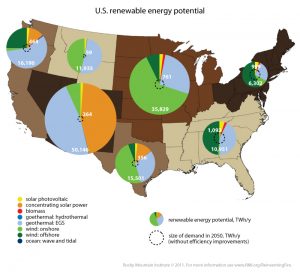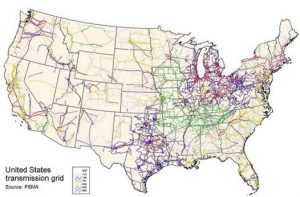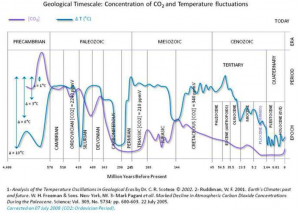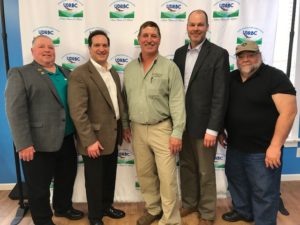Unsustainable Groundwater Management
“Public perception of freshwater is often dominated by visions of rivers and lakes. Groundwater is rarely a part of that imagination. Historically, it has been a hidden resource, and it remains so even now. The irony is that aquifers contain over 98% of Earth’s liquid freshwater.
Global and national water data are not very reliable. It is estimated that on a global basis, groundwater provides 36% of potable water, 24% of industrial water supply and 42% of water for irrigation. These estimates vary. In some countries, agriculture consumes the lion’s share of groundwater. Withdrawals from the Arabian aquifer system, for example, account for 84% of the region’s freshwater resources, most of which is used for farming. Human dependence on groundwater and the associated challenges varies considerably from one place to another, even within countries. Groundwater levels in some of the most densely populated river basins, such as the Indus and the Ganges-Brahmaputra basins in South Asia, have been plummeting. Groundwater’s invisibility and the lack of political interest are two key reasons that exploited aquifers are neither easy nor quick to remedy.”
by Asit Biswas
Read More – https://thewaternetwork.com/article-FfV/we-must-address-unsustainable-groundwater-management-Dzy5c_4XpAHdy70I_0mQ1w
Other Guides on Groundwater and Water
Water in the Universe -https://www.knowyourh2o.com/indoor-3/water-in-the-universe
The Water Cycle – https://www.knowyourh2o.com/outdoor-4/the-hydrological-cycle
UDRBC Seminar Next Week; Water Quality and Legislative Update
Next Thursday, May 2, the Upper Delaware River Basin Citizens or UDRBC will be holding a seminar in Lookout, Pennsylvania to talk landowner rights and more.
Be there! The UDRBC, lead by Ned Lang and a large group of Upper Delaware River citizens will be conducting an in-depth discussion of natural gas exploration and development. The Upper Delaware River Basin Citizens (‘UDRBC’) has announced the topic of its Spring Seminar scheduled for Thursday, May2, 2019 at the Lookout Fire Hall, 2625 Hancock Highway, Equinunk, Pennsylvania.
The seminar will be held from 9:00 AM to 2:30 PM, with lunch provided and will feature numerous speakers. Registration is online at https://udrbc.com under “EVENTS” and space is limited.
Major speakers will include:
BRIAN ORAM: Brian is a Professional Geologist and Soil Scientist for B.F Environmental Consultants. He is also a Private Well Owner Educator at PACleanwater and Managing the Keystone Clean Water Team. Water quality education is both and expertise with this entertaining expert. He knows Northeastern Pennsylvania water and geology like no one else.Brian’s specialties include well migration issues, natural gas, hydrogeology, carbon sequestering, brine water treatment and water reuse. He will address the relationship between natural gas development and water quality.
During this presentation, we will discuss water quality, groundwater, environmental issues with natural gas development, and activities that landowners/royalty owners can do to protect themselves, their community, and the environment. We will announce the free phone App that is available from the Keystone Clean Water Team on Baseline Water Testing and encourage citizens to participate in a citizen based groundwater assessment using their baseline data. (Slide Presentation – pdf version baselinetestingwaynecounty2019slide )
NOTE: Please consider supporting the Keystone Clean Water Team (501C3) in PA – some of our PSAs.
PAT HENDERSON: Pat has over 20 years experience in legislative and executive branches of government, and with leading nationally-recognized energy advocacy trade organizations. Pat is currently employed at the Marcellus Shale Foundation. He is an expert on Marcellus Shale development policy and knows government inside and outside. Pat will address the latest shale gas issues from the perspectives of both industry and policymakers.
JEFF BELARDI: Attorney Jeffrey Belardi practices out of Scranton, PA and has been licensed for 25 years. He attended Widener University and handles cases in Corporate & Incorporation, Criminal Defense, State, Local And Municipal Law, Litigation. Jeff is also one of three attorneys handling the Wayne Land and Mineral Group lawsuit against the DRBC and in defense of landowner rights.
It is important to Learn, Diagnose, and Test. Public outreach is part of the Mission of the Keystone Clean Water Team. To learn more about this Organization and support their efforts, please go to http://www.pacleanwater.org
Other Items:
- Training Programs:
Modern Shale Gas Development
Mud Logging Sensors
Shale Gas and the Global Market
Introduction to Groundwater Contamination
Groundwater Hydrology
Petrochemical Training for Engineers - Learn about the facts and not the fear – Scare Pollution (must read):
- A book on climate and climate change – a must read:
Please Get Your Water Tested – At a minimum, an comprehensive Informational Water Quality Test to at least determine your general well water quality and learn about the hazards in your community. This is not certified baseline testing, but it is a low cost means of evaluating your drinking water source. It is important to KNOW Your H20! Get Your Water Tested and order a Neighboorhood Hazard Reports for your Home.
audioEARTH, a podcast from the American Geosciences Institute – Greenhouse
audioEARTH, a podcast from the American Geosciences Institute
Listen now to Episode 6: “Greenhouse“
The word “greenhouse” brings to mind a few different ideas. Agriculture and growth, for starters. Protection from the cold, perhaps. Glass walls. Glass ceilings. Greenhouse also refers to a fundamental idea in climate science – the greenhouse effect. But did you know that the greenhouse effect was first discovered by a woman? In this episode we’re telling the story of this discovery by geoscientist Eunice Foote, and we’re talking with some of the people and organizations that are promoting women in the geosciences.
Guests are Mackenzie Cremeans, Ph.D. (Association of Women Geoscientists), Professor Collin Roesler, Ph.D. (Bowdoin College), and Heather Houlton (American Geosciences Institute).
This is the final episode of season 1! If you’ve enjoyed listening, please consider leaving a review on iTunes. It helps others find the show. Thanks!
audioEARTH connects Earth, science and people by sharing compelling audio stories about geoscience.
Suggested Reading:
Putting the Words Timely and Geology Together with Climate
“Sedimentary layers record the history of Earth. They contain stratigraphic cycles and patterns that precisely reveal the succession of climatic and tectonic conditions that have occurred over millennia, thereby enhancing our ability to understand and predict the evolution of our planet. Researchers at the University of Geneva (UNIGE), Switzerland, — together with colleagues at the University of Lausanne (UNIL) and American and Spanish scientists — have been working on an analytical method that combines observing deep-water sedimentary strata and measuring in them the isotopic ratio between heavy and light carbon. They have discovered that the cycles that punctuate these sedimentary successions are not, as one might think, due solely to the erosion of mountains that surround the basin, but are more ascribable to sea level changes. This research, which you can read in the journal Geology, paves the way for new uses of isotopic methods in exploration geology.”
Read More at “Sea level as a metronome of Earth’s history”
Different Perspective on Climate (Climate Science News)
Suggested Reading:
Global Warming-Alarmists, Skeptics and Deniers: A Geoscientist Looks at the Science of Climate Change Paperback – Illustrated, January 20, 2012.
100% Renewable is the a Realistic Goal or a No Pipe Dream
100% Renewable is the a Realistic Goal or a No Pipe Dream
This is not a standard article but a look just specifically at the issue of energy. To set some basic ground rules we have to agree on some facts:
We are not in an energy crisis, we are in a crisis related to energy waste and poor and ineffective distribution and storage.
1. We waste over 58 % of the energy we use in the USA.
2. This energy waste is double what we actually need.
3. This annual energy waste, production, lack of use, distribution inefficiencies, and waste heat, in just one year in the USA could power the UK for 7 years.
4. We are leaving money on the table that could go economy and help our countries and others.
Inefficient Production
1. Wind and solar have low inefficiencies for energy production compared to other source. So they really only make sense NOW in specific corridors or regions. 
2. The primary problem is these regions are not were the core demand in the USA is located and we lack an energy distribution network. 
3. Inefficient distribution, production, and waste requires building multiple times demand capacity to meet peak demand. Because of the lack of solid storage systems, such as battery technology, inefficient distribution and production we need to overbuild to meet peak capacity if we rely sole on renewable. A thought process:
How to Get There !- 1 Quadrillion Btus per year = 2,739,730,000,000 BTUs/day
Solar (100 % Efficiency) – 433 Btu/hr per square foot
Available 24 hours per day
Need 6100 acres of Solar Panels
Wait – Solar-Assume Solar Efficiency Assume 10% (high) – Only Available about 8 hours per day
Need 182,000+ acres of Solar Panels, plus storage and duplicate capacity.
Wind- 25 % Conversion
Need about 270,000 10 MW Turbines, plus storage and duplicate capacity.
These analysis does not factor in transmission losses. If there was only a 10% loss and no other inefficiencies, we would multiple the calculated values by 1.1, but we have a use inefficiency of 58%. This means are multiplication factor is at least 1.9 to 2 +. So – 360,000 acres of solar panels and 540,000 10 MW turbines.
The goal for renewable should not be based on a Carbon or CO2 hammer and we must stop this myth of Man controlled climate. Climate on this Earth has not been constant, it is in dynamic equilibrium with Sun, Earth Process, and to a lesser extent life on Earth.
It is very likely man is having an influence on the climate, but this is not likely CO2 production but deforestation, building in the wrong places, heat island effects, and not adapting to our environment. As an alternative approach, we are suggesting the following:
- Fact based discussions about energy, economy, politics, and culture. We are humans so science (facts) and cultural discussions are linked, but we should not be using Fear as a rally cry.
- Concentration on energy waste reduction – individuals, homes, small business, and government.
- Distribution – We should focus on “hardening” the grid and creating capacity and duplicity were needed. We must start linking “renewable and other energy sources” and take advantage of the energy diversity in the USA.
- Storage – we must develop efficient storage technologies.
- The solution is not a CO2 hammer, electric cars, or a 100% renewable life cycle, but an all the above approach.
- Remember our beaches are moving, we live on a planet with the plates move and we have the Great Earth Engine. (Geothermal is a great asset for the USA).
- Energy and energy technology – we must not be hoarders, but exports of energy and energy technology and I do not mean low cost solar panels, but micro-grid energy systems that use multiple fuel stocks that can power rural villages and towns and not a Carbon Tax.
- If we cut our waste, we cut CO2 emissions. This makes the CO2 emissions benchmark useless and to be honest the arguments based on climate change and CO2 are weak.
- Stop the 100 % renewable myth (all the above approach).
I have never recommended a book to read – this is the first, but I strongly recommend “Scare Pollution“, 2016.
I also like “Human Caused Global Warming“, but I really wish the author hired and used an editor.
“Unsettled: What Climate Science Tells Us, What It Doesn’t, and Why It Matters”
I really enjoyed – “Global Warming-Alarmists, Skeptics and Deniers: A Geoscientist Looks at the Science of Climate Change“
Audubon “Birds and Climate” Wayne County Pennsylvania
The Audubon “Birds and Climate” report will be presented at 6:30pm on February 25, 2016 at the Himalayan Institute in Bethany, PA by Barbara Leo, Conservation Chair of the Northeast PA Audubon Society. This will be a power point program illustrating the current concerns for 314 species of North American birds that are facing severe threats to their survival. You will learn how this can to averted and ways you can help. Call (570)253-2364 for more information- other programs.
Self-Help and other Training –
Meditation, Yoga, Holistic Care, Reiki and more
Colorado Snowmastodon Mammoths and Mastodons – Global Warming Glacial Interglacial
“While expanding a reservoir in Snowmass Village, Colorado, workers stumbled upon a big bone. And then another, and another, and another. Realizing they found something special, the workers called in the experts at the Denver Museum of Nature & Science (DMNS), who drove several hours to examine the site. Scientists quickly realized that this was no ordinary boneyard. Work on the reservoir halted, as DMNS scientists called in dozens of volunteers and experts from around the country to help excavate the site before construction continued. In a few weeks of excavating, the scientists and volunteers of the Snowmastodon Project uncovered an entire Pleistocene ecosystem, including fossils of giant ground sloths, long-horned bison, North American camels, mammoths, mastodons, insects and ancient plants.
The dig site was as renowned for its geologically unique setting as the community around it is known for skiing. The setting, an ancient alpine lake on top of a terrestrial high-point, meant that it once attracted animals as a watering hole, but was able to evade the destructive processes associated with glaciations. Learn more about what the site is showing scientists about past glacial and interglacial periods and what the site might suggest for the future, and explore the thousands of bones found at this unique site in the January 2016 EARTH Magazine cover story: http://www.earthmagazine.org/article/snowmastodon-project-mammoths-and-mastodons-lived-high-life-colorado.
Alongside exclusive features like the Snowmastodon Project, EARTH Magazine continues to bring you unique and groundbreaking stories, such as new research that suggests intentionally burned floors in African huts can record Earth’s magnetic field, ongoing research that suggests the Midcontinent Rift may be a hybrid rift-large igneous province, and breaking news indicating that treated water from Southern California is so pure that other, more ominous elements are leaching into it from strata surrounding the aquifer. Don’t miss our feature on the great debate about whether mantle plumes exist. All this and more is available at www.earthmagazine.org.”
Education Corner
More on Climate, Geology, Etc
Earth Dynamics: Geologic Time
Plate Tectonics – We are floating on magma.
Global Warming
Valley View Holds First High School Energy Fair Archbald Pennsylvania
“Northeastern Pennsylvania gas companies went to Valley View High School in Lackawanna County to sponsor an energy fair introducing youth to energy careers.
The growth and dedication that has been displayed between the natural gas industry and educational institutions over the years has been staggering. While much of that relationship has been amongst local area colleges, high schools have been becoming closely involved too, as evidenced by the Energy Education Program offered at Valley View High School in Archbald.”
As this blog has noted before, the Energy Education Program offered by Valley View is the first of its kind in the state, as it brings energy-specific curriculum to the high school level and was developed as a collaboration between industry experts and school officials. The course covers nine different types of energy and regularly features speakers from the various industries.
But on Friday, Dec. 18, Valley View took the next big step in its program and hosted its first Energy Fair, which was planned and organized by the Energy Education Program class.
Read More about the Event and Program
We were planning to go to the event, but the presenter became ill. Prior to the event, we did conduct training and educational course on energy conservation and Geothermal Energy.
Presentation on Sustainability Training (pdf)
Our Presentation on Careers in Energy – The Great Earth Engine (pdf)
More training Opportunities in Energy and the Environment
How you can help the Water Science Basics ! Trying to encourage a positive change in Pennsylvania.
Fact Sheet: Methane Gas Migration and Mitigation
Methane gas has been a “hidden” problem in Northeastern Pennsylvania. The gas is typically associated with wetlands, bogs, landfills, coal-producing formations, natural saline seeps, some glacial deposits, and gas storage areas. Because of the development of the Marcellus Shale, the presence of methane gas and the potential for methane gas migration is a growing concern. Methane is a colorless, odorless gas that is lighter than air. Natural gas is mostly methane (70 – 90 % CH4), carbon dioxide (0 to 8 % CO2), plus other gases. The other gases may include ethane (C2H6), propane (C3H8), butane (C4H10), and hydrogen sulfide (H2S) as well as small amounts of helium.
Methane gas is highly flammable between a lower explosion limit (LEL) of 5.53 percent by volume in air and an upper explosion limit (UEL) of 15 percent. These percentages are equivalent to a methane concentration of 50,000 and 150,000 parts per million (ppm) in air. The minimum concentration level at which the gas has the potential to explode is called the lower explosive limit (LEL); below the LEL level there is not enough gas to cause an explosion. Above the UEL, there is inadequate oxygen to fuel combustion, but if the space is vented and the gas concentration drops below the UEL, the gas can become diluted enough to explode (it would require an ignition source). Methane is not considered toxic, but it is an asphyxiant at a concentration of over 50 percent in air (it displaces oxygen). Therefore, the primary risks for methane would be asphyxiation in a confined or poorly vented area or a potential explosion hazard. As a safety measure, the natural gas industry adds mercaptans to the produced methane gas that enters the pipeline and your home. The mercaptans produce a very pungent odor so that gas leaks will be noticed, but unprocessed methane gas tends to have NO ODOR. It is critical to note that some unprocessed methane gas may contain long chain hydrocarbon molecules that can create an odor.
From the available data in the Citizen Groundwater/Surfacewater Database, it would appear that the natural background level of methane in private wells in Northeastern Pennsylvania ranges from not detectable or trace levels to over 28 mg/L. You may suspect the presence of methane gas in your water if you hear a “gurgling noise”, sputtering at the tap, the water has a lot of gas bubbles, is effervescent or fizzy.
Note: If the pumping level of water in your well starts to fall below your pump intake, ordinary air may mix with the water and produce similar symptoms. When in doubt, contact a professional to determine the nature of the observed gas.
For more on this topic – Methane Gas Migration
Citizen Groundwater and Surfacewater Database

